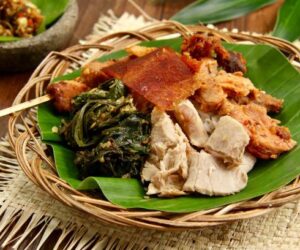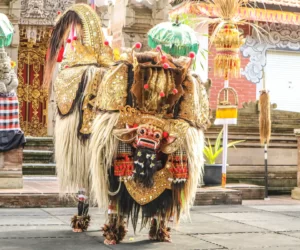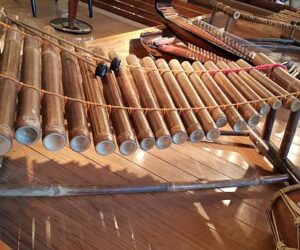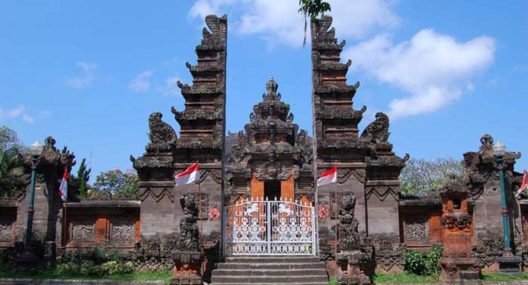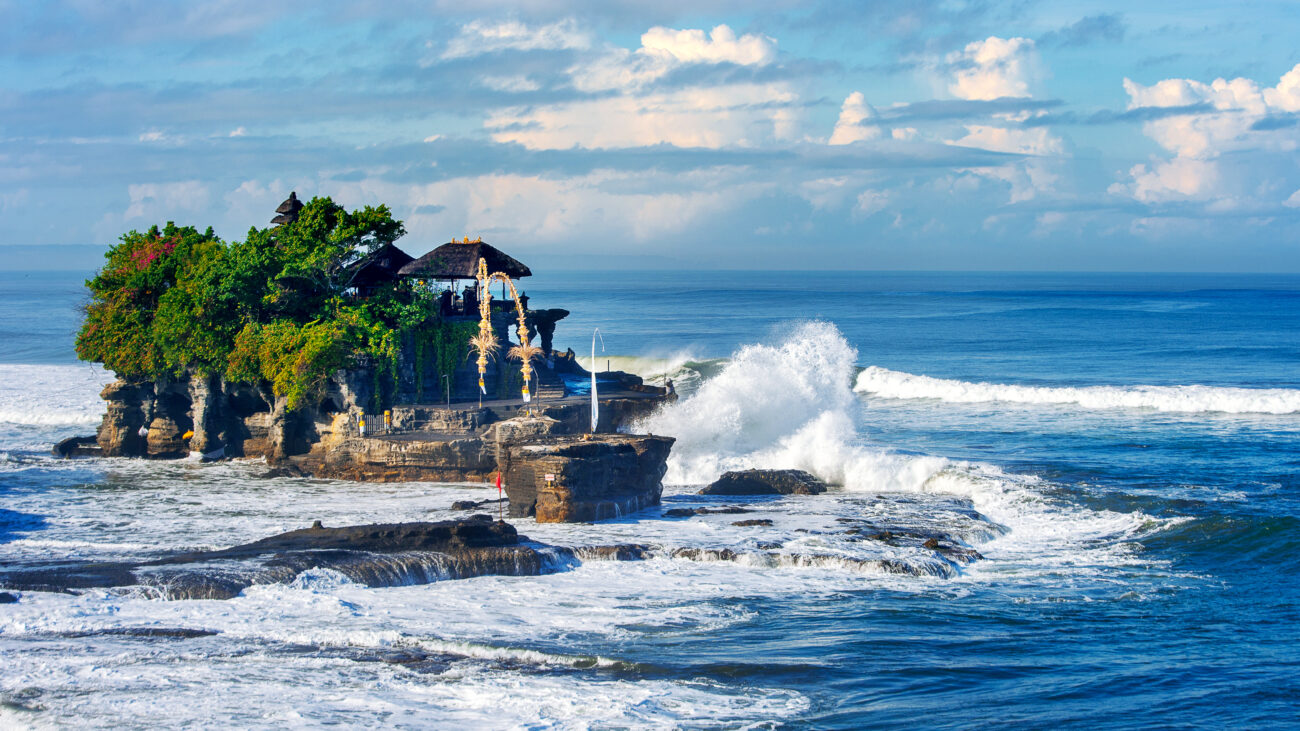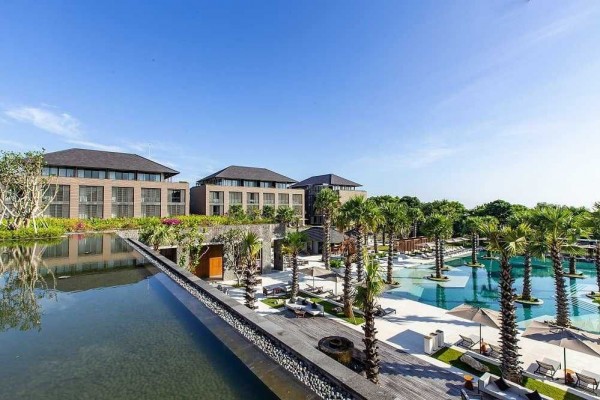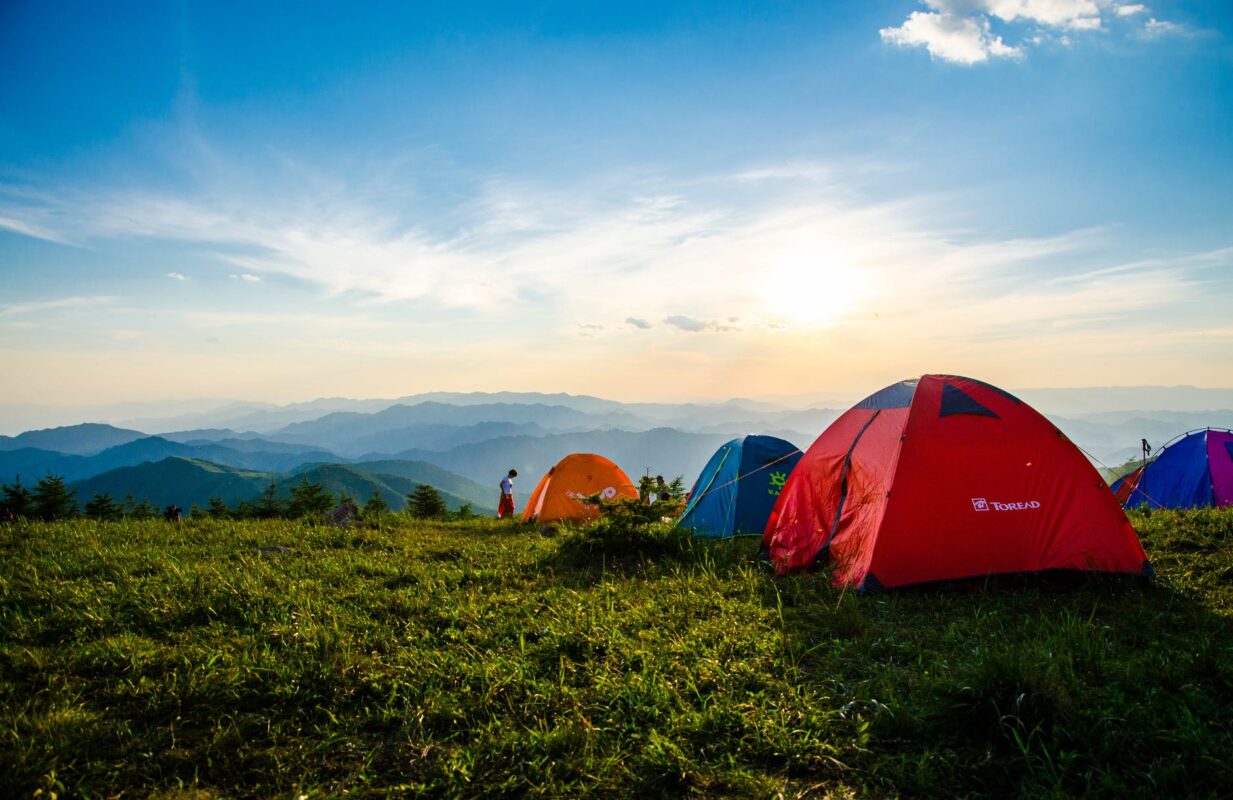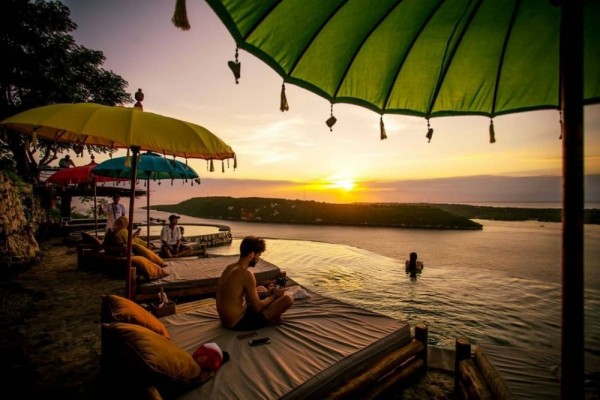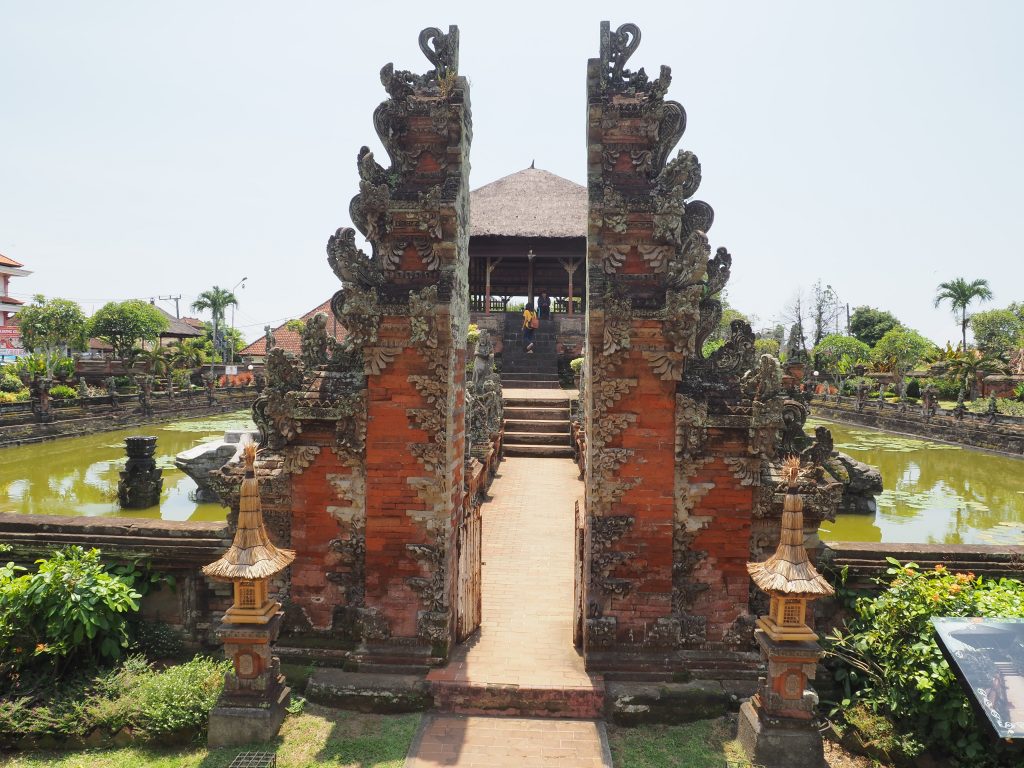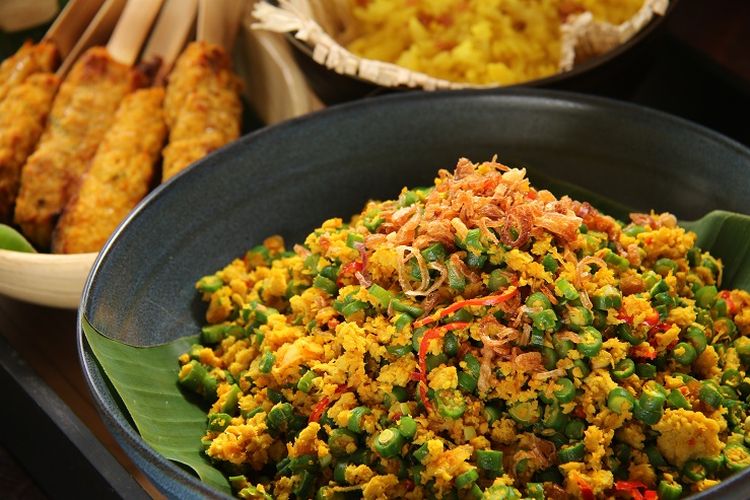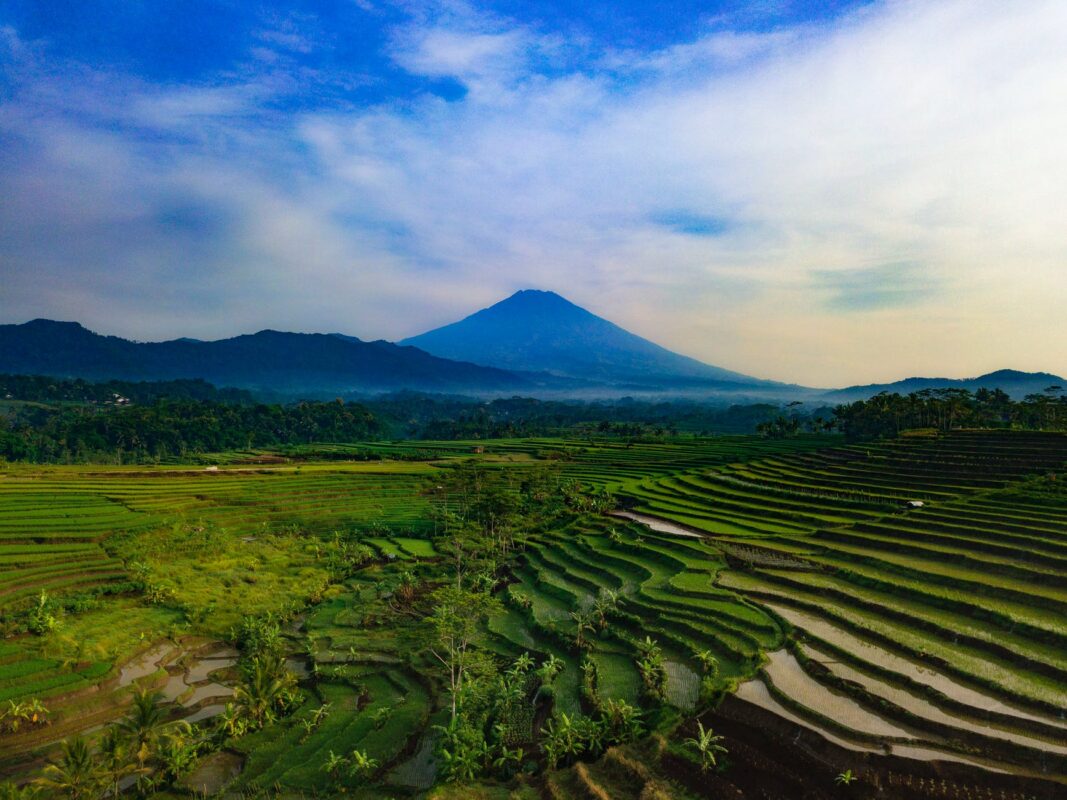So far, Bali is known as a charming tourist destination. Bali’s natural beauty and rich culture attract tourists, both foreign and domestic, to visit.
But of course, Bali also has a long history of struggle against the Dutch and Japanese colonialists. The values of the battle are reflected in the historical monuments built in several areas in Bali. So here are seven historical monuments on the Island of the Gods:
1. Bajra Sandhi Monument, Denpasar
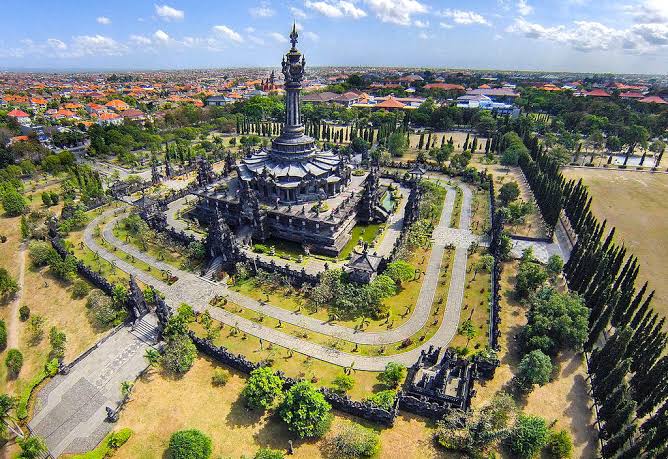
Bajra Sandhi, located in Niti Mandala Square, Renon, Denpasar, is a symbol of the struggle of the Balinese people. The construction of Bajra Sandhi in 1986 was initiated by the Governor of Bali, Ida Bagus Mantra, with the architect Ir Ida Bagus Yadnya. Bajra Sandhi was inaugurated by President Megawati Soekarno Putri on June 14, 2003, and opened to the public in 2004.
The area of Bajra Sandi reaches 13.8 hectares. At the same time, the building area is 4,900 square meters. The architecture of the monument building is Hindu. This can be seen from the structure resembling a bajra or bell, commonly used during Hindu religious ceremonies.
Reporting from Denpasar. Go.id, Bajra Sandhi was established to honor patriotism and commemorate the struggle of the Balinese people’s resistance against the invaders. Including the Puputan Badung War in 1906, Puputan Klungkung in 1908, and the Puputan Margarana War in 1946.
2. Monument to the Struggle of TNI Captain Anak Agung Gede Anom
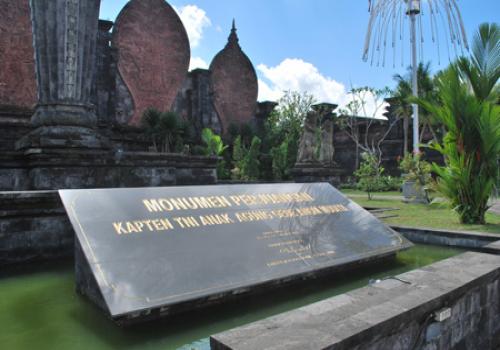
I Gusti Ngurah Rai appointed Captain Mudita as the coordinator of the fighters for the East Bali region, covering Bangli, Gianyar, Klungkung, and Karangasem regencies. Captain Mudita fought in the Balinese guerrilla war against the pre-independence invaders of Indonesia. Previously, Captain Mudita was a police officer during the leadership of Japanese fascism.
Born into a noble family in Puri Killian Bangli, Captain Mudita completed his higher education at the Dutch Trade School in Surabaya and Malang to enter the military world.
Captain Mudita was killed in a NICA attack in Penglipuran Village in his struggle for Indonesian independence. Therefore, the Captain Mudita monument is not far from the Penglipuran Village area, Bangli Regency.
3. Tri Yudha Sakti Singaraja Monument in Buleleng
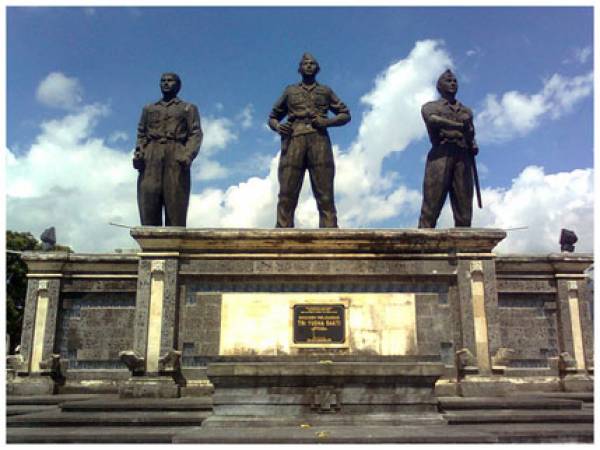
Tugu Tiga is dedicated to the warriors who played a significant role in the people of Buleleng. They were I Gusti Putu Wisnu, Captain I Gede Muka Pandan, and Major I Nengah Metra.
Lt. Col. Putu Wisnu took part in Puputan Margarana to expel the Dutch invaders from Bali. Meanwhile, Captain Muka is a hero whom underground guerrillas crush the invaders. Captain Advance is also listed as a member of PETA. Meanwhile, Major Metra fell and died in the battle at Banjar Gintungan, Sukasada.
The Tri Yudha Sakti Monument is located on Jalan I Dewa Made Kaler, Sangket, Sukasada District, Buleleng Regency. The Banja War and Jagaraga War monuments were also built in the area.
4. Tanah Aron Monument in Karangasem
When the Dutch resistance grew fiercer to seize Indonesian independence, the Balinese people carried out a long march or journey from west to east as part of the resistance strategy. Troops commanded by I Gusti Ngurah Rai arrived in Tanah Aron, precisely at the foot of Mount Agung, on July 6, 1946.
The day after, on July 7, 1946, there was a peak of fighting between NICA and the Minor Sunda military troops led by Ngurah Rai. The war in Tanah Aron, Karangasem Regency, resulted in victory for the Balinese people.
To commemorate this struggle, in 1971, the Tanah Aron Monument was built in Bhuana Giri Village. In 2012, the Karangasem Social Service, together with Kesbanglimnas, Veterans Legion, and the Tanah Aron Community, held a renovation of this historic building.
5. Java-Bali Sea Cross Operation Monument in Jembrana
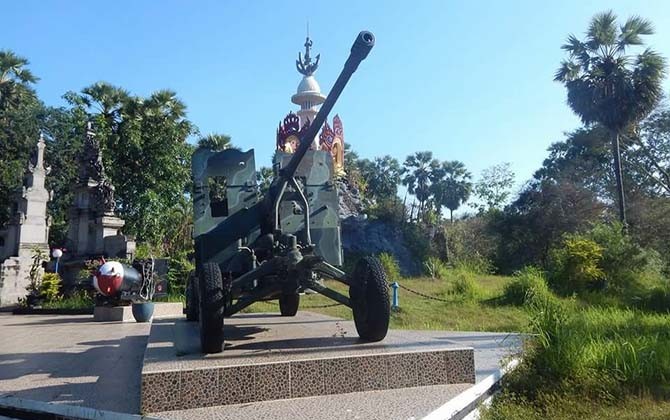
The Java-Bali Sea Cross Operation Monument is located in Cekik Village, Malaya District, Gilimanuk, Jembrana Regency. The construction of this monument was motivated by a naval battle by the Navy TRI with Dutch troops on April 4, 1946. Captain Markadi led the operation.
The TRI for the Indonesian Lesser Sunda Navy, known as the M troops, was assisted by the TRI Headquarters in Yogyakarta in the battle against the Dutch in the Bali Strait. Although the Dutch carried out a naval blockade, Captain Markadi and his troops managed to win the fight.
6. Puputan Klungkung Monument
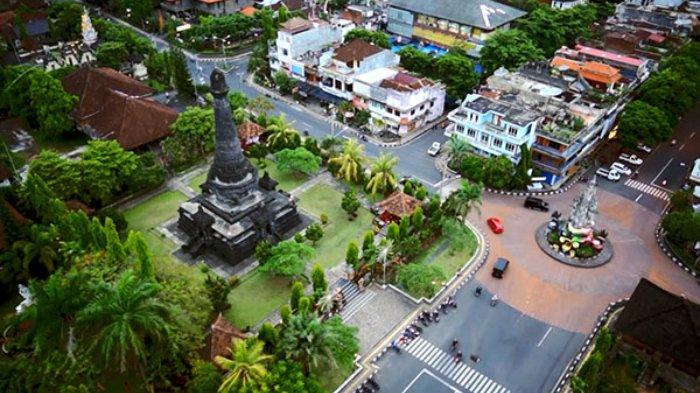
Similar to the Bajra Sandi Monument, the Puputan Klungkung Monument is a city park located in the center of Semarapura City, precisely on Jalan Untung Surapati. This monument has an area of 123 square meters with a building height of 28 meters. The Puputan Klungkung Monument construction project took six years, from 1986 to 1992.
During the colonial period, the Dutch were active in fighting throughout Bali, including Klungkung. On April 28, 1908, there was a battle to the death led by the King of Klungkung, Ida I Dewa Agung Jambe, and his relatives.
7. Margarana Nation’s Worship Park in Tabanan

Tabanan has a long history in the struggle to defend Indonesia’s independence. On November 20, 1946, a battle took place by Ciung Wanara troops, led by I Gusti Ngurah Rai, against the Dutch in Banjar Kelici, Marga Village, Tabanan Regency. Here, Ngurah Rai died along with 94 of his troops.
The Margarana Nation’s Worship Park symbolizes respect for the services of heroes in the Puputan Margarana war. This monument has an area of 9 hectares. Its construction began in 1954.
So those are seven historical monuments in Bali. Hopefully, we can continue the spirit of the struggle of these heroes.

